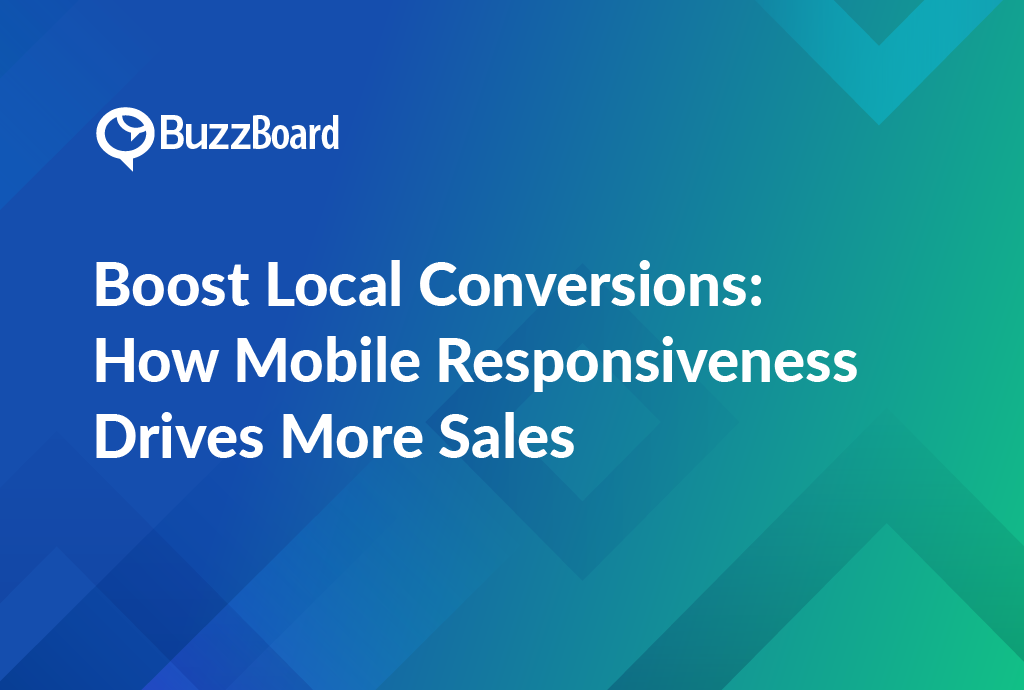Understanding the Correlation Between Mobile Responsiveness and Business Growth
In the swiftly digitizing world, it’s vital that businesses recognize the inextricable link between mobile responsiveness and their growth. This is particularly true for small, local businesses aiming to boost local sales, who should understand the significance of optimal mobile website design.
Mobile responsiveness refers to a website’s capability to adjust its layout and content based on the user’s device, offering a seamless browsing experience. The need for a responsive website design is crucial given the vast number of users favoring quick online transactions on their mobile devices. Indeed, research indicates that 57% of users won’t suggest a business with a subpar mobile website.
A responsive design is a catalyst for local businesses to expand their sales. On a local scale, think of the accessibility this offers for customers in your vicinity. They can effortlessly explore your website, get acquainted with your products or services, and potentially become loyal customers, given your website’s user-friendliness.
Furthermore, a responsive design is vital in local business marketing. Consider the vast outreach a mobile-responsive site can garner compared to a non-responsive rival. Google’s search engine algorithm rewards mobile-friendly websites by positioning them higher in search results, leading to increased visibility and driving more traffic and potential customers your way.
Plausibly, enhancing mobile responsiveness is more than an option; it’s essential for local businesses intent on growth.
The Role of Mobile Website Design in Boosting Local Conversions
In today’s digital age, mobile responsiveness can greatly boost local sales for small businesses. Mobile website design plays a crucial role in enhancing local conversions and is an integral aspect of local business marketing.
A responsive design ensures that your website offers an immersive user-experience, regardless of the device. Customers are more likely to engage with a locally optimized, mobile-friendly website, subsequently increasing the likelihood of conversions. Research indicates that nearly 74% of users are more likely to revisit mobile-friendly websites.
Moreover, mobile website design can significantly enhance your website’s visibility on search engines. Google prioritizes mobile-friendly websites, implying that an optimally functional mobile website enhances your chance of appearing in local search results.
Remember, designing a mobile website isn’t just about shrinking web pages; it’s about strategically arranging content while prioritizing navigability for small screens. Beyond aesthetics, responsive design improves accessibility of local business services to potential customers.
To boost local conversions, inclusion of mobile website design in your digital strategy is critical. Local businesses should not underestimate the power of a well-designed mobile website.
Devising Local Business Marketing Strategies With a Focus on Responsive Design
To effectively grow local sales, digital marketing professionals must understand the importance of responsive design in local business marketing strategies. The mobile-first approach of responsive design accommodates varying screen sizes and platforms, providing a seamless online experience for customers irrespective of the device they use – be it smartphones, tablets, or more.
Implementing a mobile-optimized website not only improves your local business’s visibility but also enhances your brand’s digital footprint, positioning you as an industry leader. According to Statista, over 6.3 billion people worldwide used smartphones in 2021, highlighting the imperative for a mobile-friendly online presence in boosting local sales.
So, how does responsive design benefit local business marketing? Here’s how: when a local customer searches for a product or service you provide, Google’s SEO algorithm preferences local businesses with mobile-friendly websites over those without. Thus, integrating responsive design into your marketing strategy bolsters local SEO, drives customer engagement, and boosts sales.
Therefore, digital marketers must consistently advocate for responsive design and advise their clients on how to capitalize on its potential for local business marketing. Now is the time to move beyond simply being ‘mobile-friendly’, morphing ‘mobile optimization’ into a standard business practice when devising local business marketing strategies.
Case Studies Highlighting the Impact of Mobile Website Design on Local Sales
The shift toward mobile browsing has caused businesses with robust mobile website design to witness substantial growth in local sales. Let’s examine some case studies that demonstrate the influence of mobile responsiveness.
One local boutique saw a 50% surge in sales after implementing a responsive design layout. Initially, the unresponsive website was difficult to navigate, leading potential customers to abandon it. However, the change to a mobile-responsive site led to a sales increase, corroborating that seamless mobile interaction is crucial in the current digital market.
Similarly, a local restaurant noted a 65% increase in online reservations after transitioning to a mobile-friendly design, specifically from mobile users.
These instances underscore how businesses can significantly enhance local sales through mobile responsiveness. It’s more than just staying current it’s about meeting your customers where they are.
Local businesses should prioritize mobile website design investment as part of their local marketing strategy. Looking at the case studies, redesigning the mobile user experience can return worthwhile dividends through increased sales.
The Challenges and Benefits of Integrating Mobile Responsiveness to Increase Sales
The digital marketplace has noticeably shifted, prompting businesses to readjust their marketing strategies – especially local businesses aiming to increase local sales. At the heart of this evolving landscape sits mobile responsiveness.
Given that more than 50% of all web traffic now originates from mobile devices, integrating responsive design into your marketing strategy is not an option, it’s a necessity. Websites not optimized for mobile are being pushed down by Google’s algorithms, negatively affecting their visibility, engagement, and ultimately, sales.
Responsive design ensures that websites adapt to various screen sizes, offering an optimal viewing experience regardless of the device. Successful mobile website design can substantially decrease bounce rates, as users often leave a site that is difficult to navigate on a small screen. Therefore, effective local business marketing strategies must include mobile responsiveness to remain competitive.
The benefits of responsive design extend beyond aesthetics and usability – it improves your website’s SEO too. Collaborating with a reliable digital marketing agency that specializes in responsive design can turn these challenges into potential sales growth opportunities.
Although the process may be daunting, implementing mobile responsiveness can significantly expand your business’s adaptability, reach, and visibility in today’s digital-intensive marketplace. It’s essential to meet your customers where they are, which is currently on mobile. Consequently, to effectively grow local sales, mobile responsiveness must be integrated into your overall digital marketing strategy.








